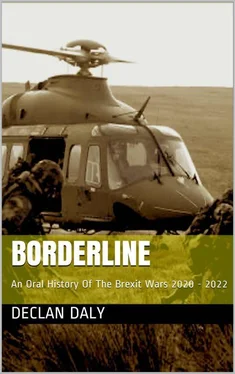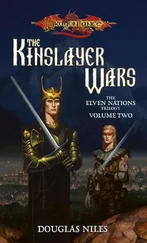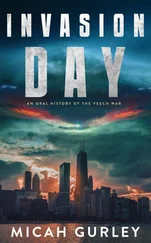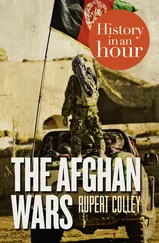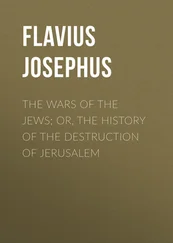Once you got inside the gate, the fence around the whole area was just a chicken wire fence, nothing fancy. It was just as much to mark the bounds of the place as any kind of security. Once you got inside. The people there, so many more than what we were expecting but the state they were in. You had to remember – they’d been driven from their homes in fear, so they didn’t always have much with them. Think if your house was on fire, and you ran out without something as simple as your car keyes? How would you carry anything else? While people are shooting at you?
They were almost universally in a bad way in terms of just general exhaustion and stress, but I’ll say something for the people running the place, they were still being properly fed and had safe running water. That on it’s own saved lives. The sick though, the Covid-19 cases. The place was over full to start with, so the amount of Covid-19 cases just overwhelmed the care available. You had every stage there from mild cough to people dying on stretchers who needed an ICU. It was horrific to watch.
I saw some lads, lads who’d seen plenty of fighting and handled it as well as any of us could. They broke when they had to start moving these people, and the docs might take them to one side and say ‘that one has to stay here’. Too sick to move, expectant. They weren’t going to make the journey alive, they didn’t have the equipment to hand to treat them and they would die if they were moved. So they died right there instead. And people who could make it went instead. I never saw that in combat, never mind to see it like this with just normal people … and that was the whole thing that really hit home to me then, during that operation. The whole time we had been fighting, your horizons are pretty close, you know? It’s don’t get killed today in the Sliabh Blooms, or make it to the end of the night in Donegal, or just don’t put your foot down on the next step without looking that there’s no IED in front of you. Nothern Ireland itself became an abstract thing, a far away place; even when we were looking at it right in front of us. But in reality it’s just people. That could have been anyones’ families that we were dealing with there. There’s no difference.‘
◆◆◆
While the bulk of the deployed soldiers secured the immediate area, organised the landing sites, moved people by road and generally tried to smooth the flow of people out of the camp, other organisations were not resting. The second day of the operation was to be a bitter one.
On the back of a report from an outbound Chinook that several roadblocks were being formed on the A46, blocking the fastest route back to Finner, the company of reservists and members of 28 Bn who now formed C Coy of Task Group Viking began to patrol the hills and roads back towards the sighting. A company strength patrol was stretching the terms of the agreement on how they could operate while still within Northern Ireland, but was considered an necessary evil under the circumstances. Once again, moving in such a large formation was providing mixed results among the reservists whose competence and comfort zone lay strictly in small unit warfare.
Approaching the roadblock and lead by a Mowag, with dismounted soldiers flanking in the fields on either side, the patrol stopped, not wanting to drive into what was very likely a booby trapped obstacle. As the soldiers moved forward they came under sniper fire from the far side of the roadblock. Returning fire, the patrol withdrew.
There was neither the time nor the authority to follow through on the attack under the circumstances. Had they done so, they would have found that the series of roadblocks – tractors, buses and other vehicles overturned on the road – were indeed mined. They would also have found that they were under fire not from Carsonites but from Dissidents,who regarded any victory over Carsonites, PSNI or Irish Defence Forces all to be equally a success. As the morning of this second day ran into afternoon and the patrol returned to Camp Erne, the A46 had to be given up as closed, and a new route out was planned along the Glenasheevar Road. Robbing from the title of a Bernard Fall book, this became known as An Sráid Gan Áthas – Irelands very own Street Without joy.
Comdt Dave Heally
‘We’d sent off as many as we could by air, but the clock was really ticking now, you know? Politically… We were all aware of the tensions but no one knew what was meant by ‘treated as an invading force’ specifically, but it wasn’t going to be good was it? We’d given up on the A46, ostensibly the fastest way out, due to the time pressure. We could have forced through the roadblocks and the inevitable ambushes there but it would’ve taken too much time. So, we’d already sent out quite a few of the softskin vehicles in the opposite direction towards Enniskillen and then down the N4 – the goal at that stage was just ‘get across the border’, it was all people without Covid-19 onboard at that point so it wasn’t as critical to get to a camp or a hospital, just to get out of the North. We thought… no, we’d hoped that the forces that had been laying roadblocks and sniping that morning was all there was, that that was the big play they were making?
It wasn’t entirely unreasonable, we knew we’d given them a serious bloody nose over the last while so maybe they hadn’t gotten as organised as the int had claimed? Talk about indulging in wishful thinking. Maybe we thought that way because we didn’t have a choice. The only way out for the last troops and refugees by that evening was to exit back towards the west along the Glenasheevar Road to Lough Melvin, cross the border towards Rossinver then hang a right along the southern shore of the lake and then leisurely drive back into Finner, being at that point able to give the proper attention to convoy security etc etc.
But the time was really against us, only a few hours. I know, anyone looking back at this is saying no route recce, not enough flank security all that and I know. We didn’t have enough of what we needed, B Coy had escorted the previous softskins out of the area with two of the Mowags, so we had three plus enough trucks for us – A Coy and C Coy. Our Task Group HQ had gone out to Finner with the last helicopters to start getting set up there for our arrival and we expected follow on taks too. It had just been that kind of month, so it was fair enough for them wanting to get ahead of that. My orders then, as the senior Comdt left, was to oversee the move out.
The Glenasheevar road for those who aren’t familiar with it, runs east – west pretty much, from Lough Erne Lower where the IDP camp was to Lough Melvin which is itself split down the middle by the border. For most of that route, it goes through a shallow valley with hills on either side. It’s more or less single track all the way for the size of vehicles we had. Left and right, you had roads lined by trees, you had farmland, few enough houses but they were there… Look, someone reading this with hindsight is saying ‘you drove down a one lane road, overlooked on both sides with ample cover for the enemy?’. We weren’t blind to that at the time, trust me – I was already worried. But the only threat we’d encountered had been on the A46, the northern side of the hills. And, once again, time was the main thing we were worried about.
So the plan was, when you can’t use the kind of normal, careful process that you’d like but you have to do something anyway, what do you do? You do it fast. That was the plan. Two Mowags up front, one at the rear, trucks in the middle and get down that road as fast as possible. We’d briefed of course on what to do in the event of roadblocks or ambushes. We planned that any time we stopped, we’d put out flank security to recce the area. Technically we weren’t allowed to do any of that, but we chose to interpret that as basic convoy security rather than ‘carrying out any operations not linked to the humanitarian effort.’ And then off we went.
Читать дальше
